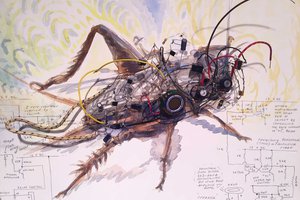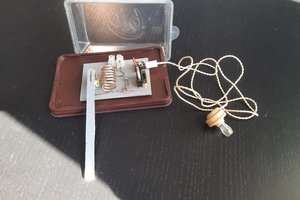When I was studying for a mid-life PhD qualifying exam, I found that I needed to re-learn a lot of linear algebra, some of which I only had a sketchy idea about from the first time more than 15 years before. I was lucky enough to find MIT's OpenCourseWare program where they put materials for their courses on line for free (under a creative commons license, ironically). I bought the book, watched all of the video lectures, did a lot of the homework problems, and came away with a solid understanding of what had always been a murky subject for me. I found that re-learning a subject after having some years of experience really helped make the connections to real applications and motivated me to thoroughly understand the material. I ended up "acing" the qualifying exams, but never finished the degree (stories for another time :-)
For some time, I've meant to do the same thing with the 6.002 Circuits and Electronics course, cited here:
Anant Agarwal. 6.002 Circuits and Electronics. Spring 2007. Massachusetts Institute of Technology: MIT OpenCourseWare, https://ocw.mit.edu. License: Creative Commons BY-NC-SA.
This project is about my re-learning through this course. At a bare minimum, I'm going to watch all the video lectures and create a project log about each one. I'll probably focus on things that I had forgotten, had misconceptions about, or are presented in a particularly interesting or useful way. Anyone interested in joining the project, following along, and/or participating with comments is more than welcome to.
To get an idea of what the course covers, here's an excerpt from the syllabus (citation above):
Course Objectives
After successfully studying 6.002, students will be able to:
- Understand the basic electrical engineering principles and abstractions on which the design of electronic systems is based. These include lumped circuit models, digital circuits, and operational amplifiers.
- Use these engineering abstractions to analyze and design simple electronic circuits.
- Formulate and solve differential equations describing the time behavior of circuits containing energy storage elements.
- Use intuition to describe the approximate time and frequency behavior of circuits containing energy storage elements.
- Understand the concepts of employing simple models to represent non-linear and active elements-such as the MOSFET-in circuits.
- Build circuits and take measurements of circuit variables using tools such as oscilloscopes, multimeters, and signal generators. Compare the measurements with the behavior predicted by mathematic models and explain the discrepancies.
- Understand the relationship between the mathematical representation of circuit behavior and corresponding real-life effects.
- Appreciate the practical significance of the systems developed in the course.
Learning Outcomes
- Employ simple lumped circuit models for resistors, sources, inductors, capacitors, and transistors in circuits.
- Analyze circuits made up of linear lumped elements. Specifically, analyze circuits containing resistors and independent sources using techniques such as the node method, superposition and the Thevenin method.
- Employ Boolean algebra to describe the function of logic circuits.
- Design circuits which represent digital logic expressions. Specifically, design a gate-level digital circuit to implement a given Boolean function.
- Check static discipline constraints in circuits. For example, determine if the circuit representing a gate provides adequate noise margins.
- Determine the output produced by a circuit for a given set of inputs using the switch resistor model of a MOSFET.
- Perform a small-signal analysis of an amplifier using small signal models for the circuit elements.
- Calculate the time behavior of first order and second order circuits containing resistors, capacitors and inductors.
- Calculate the frequency response of circuits containing resistors, capacitors and inductors.
- Construct simple gates, amplifiers, or filters in the laboratory.
- Determine in...
 Ted Yapo
Ted Yapo
 Kelly Heaton
Kelly Heaton
 Paul Gallagher
Paul Gallagher
 MaBe42
MaBe42
 Andrea Console
Andrea Console